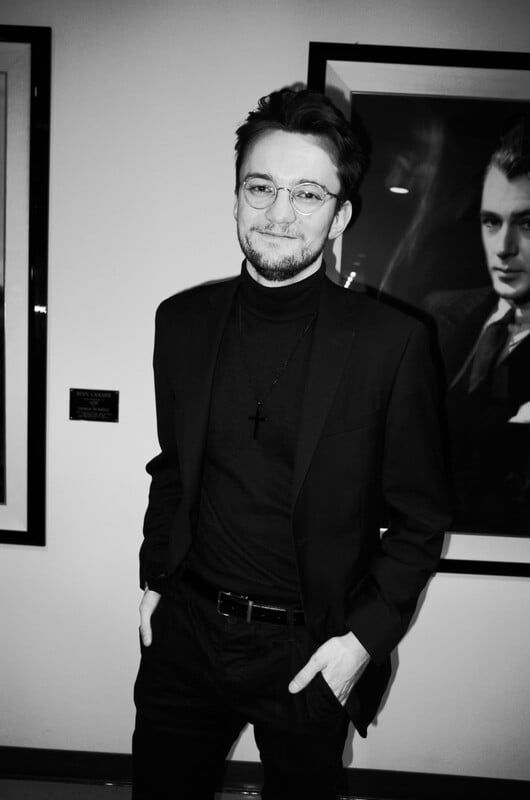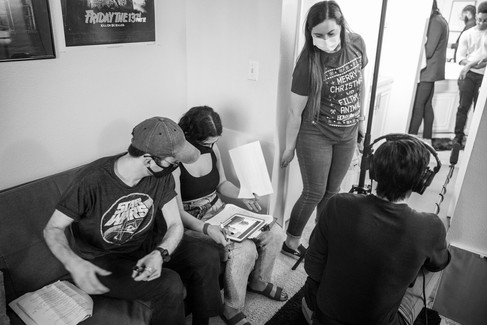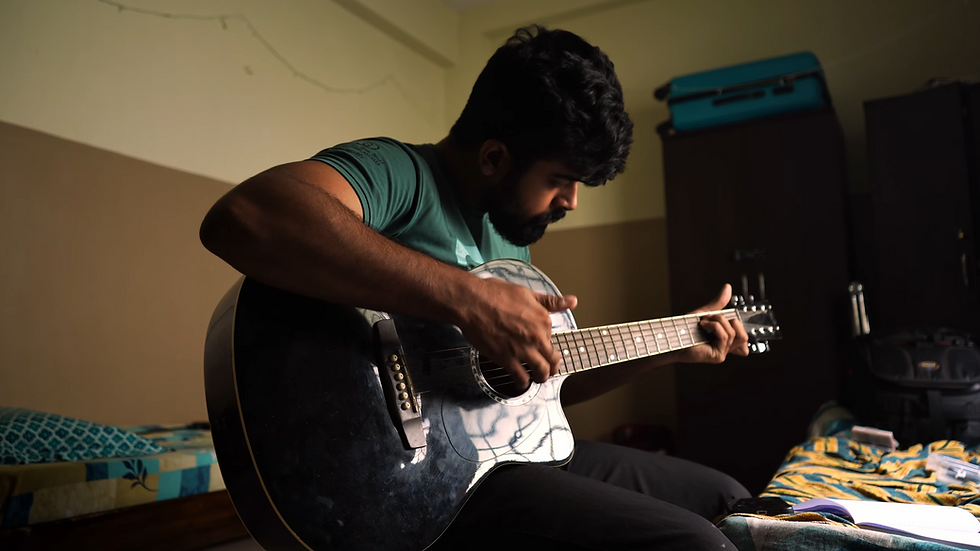Film Review: Morning After, Directed by Elijah Nelson Chandler
- Tokyo Cine Mag

- Mar 11, 2024
- 4 min read

The film Morning After, written, produced, and directed by Elijah Nelson Chandler, starts with energetic shots of a party. The filmmaker introduces the setting right from the first moments using visual language, without focusing on details but simply showing various signs like glances exchanged during dancing and a pill passed from one person to another, therefore, welcoming us to the setting. With this short introduction that lasts only a minute, the filmmaker introduces the characters and the mood of the film, setting the audience's expectations. After this introduction, the film's title appears. The title comes exactly where it acts as an announcement; after a night of partying and dancing, now it's the "Morning After," and what we see in the room emphasizes this image: liquor bottles, cigarette butts, leftover food, snacks, and so on. The filmmaker meticulously arranges each frame to make a whole out of these separate shots.
Shooting Morning After in black and white has had several fundamental advantages. If the party scenes were shot in color, the colors themselves and the play of light on people's faces could have added attractiveness to the party, whereas in black and white format, there is no intensification of emotions or eye-catching beauty in the images, leading us more purely to the story. On the day after the party, when Henry, played brilliantly by Teon Kelley, wakes up and finds himself in a messy room, his text messages immediately inform us of a tragedy that happened last night. The filmmaker relies solely on visual language to advance the story. However, Morning After subverts the viewer's assumptions and is always one step ahead of the audience. In its screenplay structure, there are moments that are omitted, gaps, which the viewer fills in with the help of imagination and clues given. But as the film progresses, we realize we need to revise our assumptions about the events of the previous night. The viewer, who initially thought Henry had fooled around with a girl at the party, suddenly discovers that the girl's life may be in danger.
After filling in the gaps of the events of the party, which seem to have somewhat slipped from Henry's memory, the film transitions towards the crime genre with the help of sound design and cinematography. The fact that the film takes a step into the crime stories from this stage is intriguing in itself and highlights the director's ability to change the atmosphere. Elijah Nelson Chandler's art of setting the scene prevents the film from becoming tedious for even a moment and ensures a cohesive and dynamic rhythm of events. By using this change of atmosphere, the director expands character development, and as the scenes from last night become clearer and new puzzle pieces are put together, we move towards a deeper understanding of the events and the characters. Understanding that Henry was not alone at the party last night and that Sam (his roommate) kept an eye on him at the party, we realize that we have been faced with a mystery from the beginning and now have countless questions to answer.

The screenplay reveals more pieces of the puzzle of the party to advance the narrative. These puzzle pieces come together with the introduction of a new character played by Akin Coley, and we see more of the conflicts from the mentioned night. Conflicts that have been erased not only from the character's mind but also from the film's narrative. The filmmaker skillfully decorates physical altercation scenes with remarkable skill. One of the most challenging aspects of filmmaking has always been working on action scenes, and usually in many action films, we are faced with scenes that are not believable due to technical and executional weaknesses, undermining their credibility. This is because action scenes generally require a precise understanding of rhythm from the filmmaker. Elijah Nelson Chandler demonstrates not only a precise understanding of rhythm but also the ability to expand his characters within these action scenes and provide us with a deeper insight. Let's not forget that most of these events take place in a small room, and working in a confined space is usually very challenging and requires a high level of experience and skill. The director successfully manages to advance the film's rhythm in this closed and limited environment, nurture his characters on the path of story transformation, and visually achieve something attractive and commendable.


Without giving away the continuation of the story, it must be said that Morning After is an ambitious film that excels in character development and visually striking aspects. It skillfully utilizes black and white imagery to maintain a cohesive atmosphere and present a mysterious and dark story about courage and revenge. The way the screenplay is expanded and the visual structure of the film allow the filmmaker to add more details to a longer version of this film, making Morning After potentially an extended version with the same complexity and characters that are just as simple yet real and believable. The screenplay and location are so closely intertwined, and on the other hand, the cinematography and performances of the actors have been so complementary that an excellent and captivating result has been achieved. The inner journey that the characters go through, despite the initial assumptions of the audience, opens up things that are unpredictable. This aspect of unpredictability can be considered a winning feature of the film. The screenplay starts from a simple and seemingly familiar situation but reaches a completely different conclusion from the introduction it presents. It is a film that can offer many educational aspects in the field of screenwriting and working with existing materials in a confined space for aspiring filmmakers.












Comments